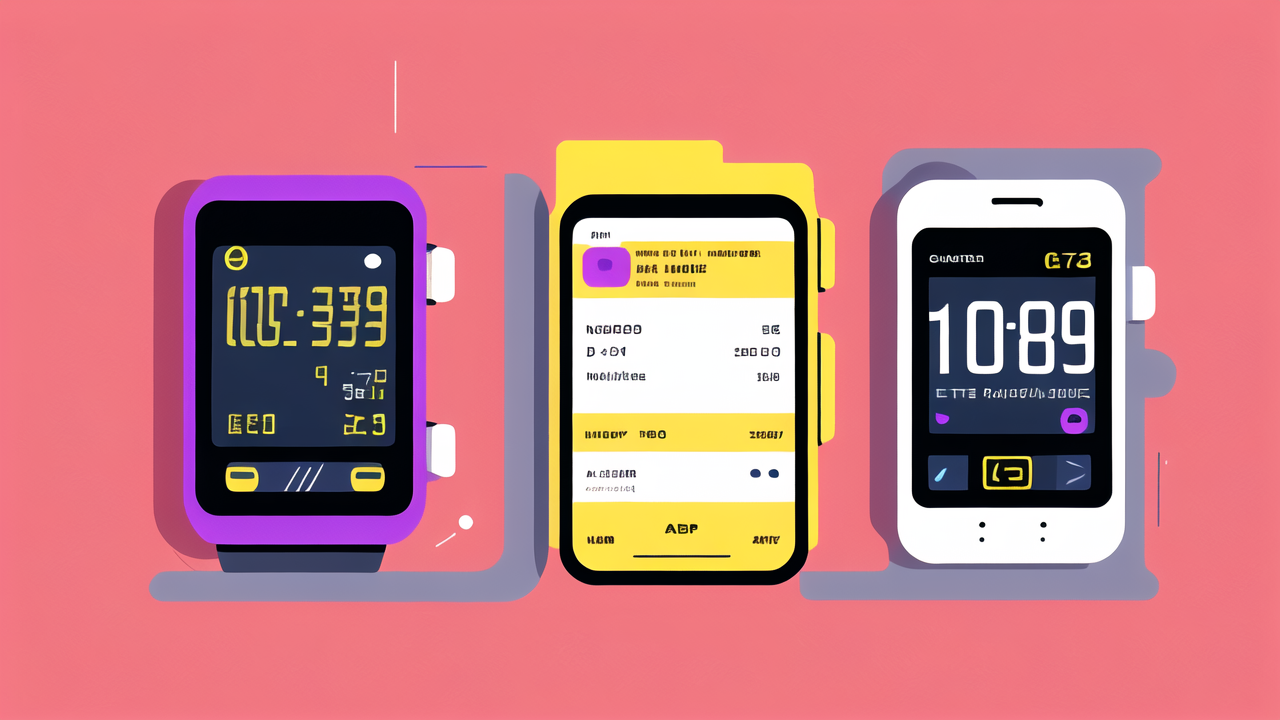Understanding the Evolution of Digital Watches in the United States
The Origins of Digital Timepieces
Digital watches first appeared in the 1970s. They were a huge leap from analog watches. These early models showed time with LED displays. They were bulky and ate up batteries fast. But people loved them. They were new and exciting.

The first digital watch was the Pulsar. Hamilton Watch Company made it in 1972. It cost a lot - about $2,100. That's over $13,000 today! But it started a revolution. Soon, other companies joined in. Casio, Timex, and Seiko made their own digital watches.
By the 1980s, digital watches were everywhere. They became cheaper and more advanced. They added features like calculators and games. These watches weren't just for telling time anymore. They were mini-computers on your wrist.
Technological Advancements in Digital Watches
Digital watches kept getting better. In the 1990s, they got smarter and tougher. Casio's G-Shock line was a big hit. These watches could take a beating. They were popular with athletes and outdoor enthusiasts.
LCD screens replaced LED displays. This made watches easier to read. It also helped batteries last longer. Watches started to have more functions. They could store phone numbers and show different time zones.
The 2000s brought even more changes. Watches got thinner and lighter. They started to look more stylish. Some had touchscreens. Others could connect to your phone. Smartwatches began to appear. These could run apps and do much more than just tell time.
Impact of GPS and Connectivity on Digital Watches
GPS changed digital watches forever. Now, watches could track your location. This was great for runners and hikers. You could see your route and pace. Some watches could even guide you back home.
Connectivity made watches even smarter. They could sync with your phone or computer. This let you update your watch easily. You could also share your fitness data online.
Bluetooth was a game-changer. Watches could now show notifications from your phone. You could see texts and emails right on your wrist. Some let you answer calls without taking out your phone.
FILA's Incursion into the Wearable Tech Market
Brand History and Diversification into Digital
FILA started as a clothing company in Italy in 1911. For years, they focused on sportswear. They made clothes for tennis, running, and other sports. FILA became known for style and quality.

In recent years, FILA has branched out. They've entered the digital watch market. This move makes sense. Many of their customers are into fitness. Digital watches fit well with their sporty image.
FILA's move into wearable tech is fairly new. They've launched smartwatches and fitness trackers. These devices blend FILA's style with modern tech. It's a way for FILA to stay relevant in a changing market.
The FILA Smartwatch and Fitness Tracker Features
FILA's smartwatches pack a lot of features. They track steps, calories, and sleep. Many models have heart rate monitors. Some can even measure blood oxygen levels. These are key for fitness enthusiasts.
The watches also have smart features. They can show notifications from your phone. Some models let you control music playback. Many are water-resistant, good for swimmers or rainy days.
FILA's fitness trackers are simpler. They focus on the basics. Step counting, calorie tracking, and sleep monitoring are standard. They're designed to be worn all day. They're lightweight and have long battery life.
Market Positioning: FILA's Strategy against Competitors
FILA isn't trying to beat tech giants like Apple or Samsung. Instead, they target a specific niche. Their watches are for people who want style and basic smart features. They're not for tech geeks who want the latest gadgets.
FILA's prices are mid-range. They're more expensive than basic fitness trackers. But they're cheaper than high-end smartwatches. This makes them appealing to budget-conscious consumers.
FILA uses its brand name to stand out. People trust FILA for sportswear. Now, they can trust FILA for wearable tech too. It's a smart way to enter a crowded market.
Analyzing Consumer Trends in Wearable Tech
Shift in Consumer Preferences towards Smart Fitness Trackers
Consumers today want more from their watches. They don't just want to know the time. They want devices that help them live healthier lives. This is why smart fitness trackers are booming.

These trackers do more than count steps. They monitor heart rate, sleep quality, and stress levels. Some can even detect falls or irregular heartbeats. This data helps people make better health choices.
Price is also a factor. Many smart fitness trackers are affordable. They offer good value for money. This makes them attractive to a wide range of consumers.
How Digital Watches are Becoming Fashion Statements
Digital watches aren't just functional anymore. They're fashionable too. Many people choose watches based on how they look. This trend has led to more stylish designs.
Color options have expanded. You can find watches in every shade imaginable. Customizable faces let people express their personality. Some watches have interchangeable bands for different looks.
High-end brands are joining in. Companies like Tag Heuer and Fossil make luxury smartwatches. These blend traditional watch design with modern tech. They appeal to fashion-conscious consumers.
The Role of Digital Watches in Modern Lifestyle and Fitness Regimens
Digital watches play a big role in many people's lives. They're not just for telling time. They're tools for healthier living. Many people use them to track workouts and monitor health stats.
For fitness enthusiasts, these watches are invaluable. They can track runs, swims, and bike rides. They provide data to help improve performance. Some even offer coaching and training plans.
Even for non-athletes, digital watches are useful. They can remind you to move more. They track your daily activity. Some help manage stress with breathing exercises. In our busy world, these features help people stay healthy and balanced.




Leave a comment
This site is protected by hCaptcha and the hCaptcha Privacy Policy and Terms of Service apply.